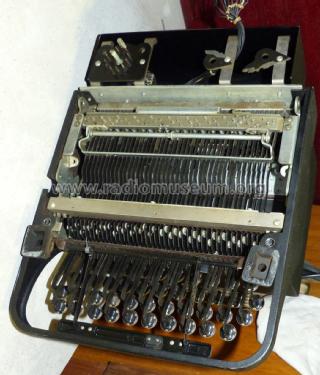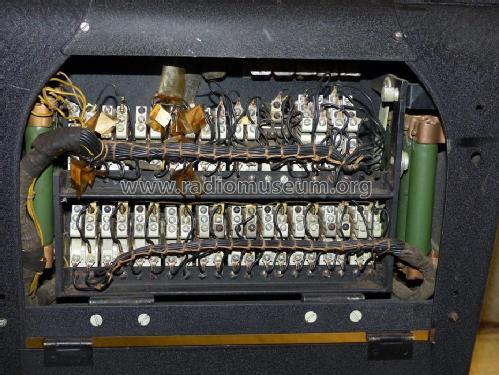Alphabetic Duplicating Key Punch 031
IBM; Armonk, N.Y.
- Pays
- Etats-Unis
- Fabricant / Marque
- IBM; Armonk, N.Y.
- Année
- 1933 ?
- Catégorie
- Processeur de signal et informatique
- Radiomuseum.org ID
- 355858
Cliquez sur la vignette du schéma pour le demander en tant que document gratuit.
- Gammes d'ondes
- - sans
- Tension / type courant
- Alimentation Courant Alternatif (CA) / 110 (60 cps) 220 (50 Herz) Volt
- Haut-parleur
- - - Pas de sortie basse fréquence
- Matière
- Boitier métallique
- De Radiomuseum.org
- Modèle: Alphabetic Duplicating Key Punch 031 - IBM; Armonk, N.Y.
- Forme
- Gros appareil industriel ou militaire (> 20 kg)
- Dimensions (LHP)
- 40 x 38.25 x 27.25 inch / 1016 x 972 x 692 mm
- Remarques
-
columbia.edu/cu/computinghistory/oldpunch.html:
The IBM Type 31 Alphabetical Duplicating Punch, a motor-driven key punch from 1934, with a typewriter-like keyboard and a separate numeric keypad.This model (current with the release of the IBM 405 accounting machine) used the new (1928) standard 12 rows x 80 columns cards and was almost certainly in use at the statistical and astronomical laboratories, BASR, and elsewhere at Columbia before the introduction of the 024 and 026 models in 1949 - with tubes.
The alphabetic keyboard is similar to a conventional manual typewriter except that the shift, tab, and backspace keys were eliminated, and a skip, release, stacker and '1' key were provided" (IBM History Archive).
- Littérature
- columbia.edu/cu/computinghistory/ibm031
- Schémathèque (1)
- computerhistory.org/collections/catalog/102631023
- Auteur
- Modèle crée par Heribert Jung. Voir les propositions de modification pour les contributeurs supplémentaires.
- D'autres Modèles
-
Vous pourrez trouver sous ce lien 20 modèles d'appareils, 20 avec des images et 14 avec des schémas.
Tous les appareils de IBM; Armonk, N.Y.
Collections
Le modèle Alphabetic Duplicating Key Punch fait partie des collections des membres suivants.
Musées
Le modèle Alphabetic Duplicating Key Punch peut être vu dans les musées suivants.
























